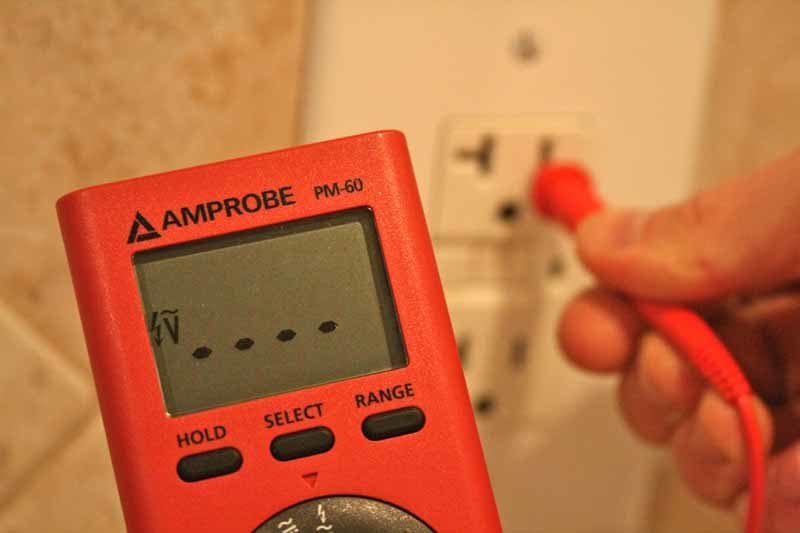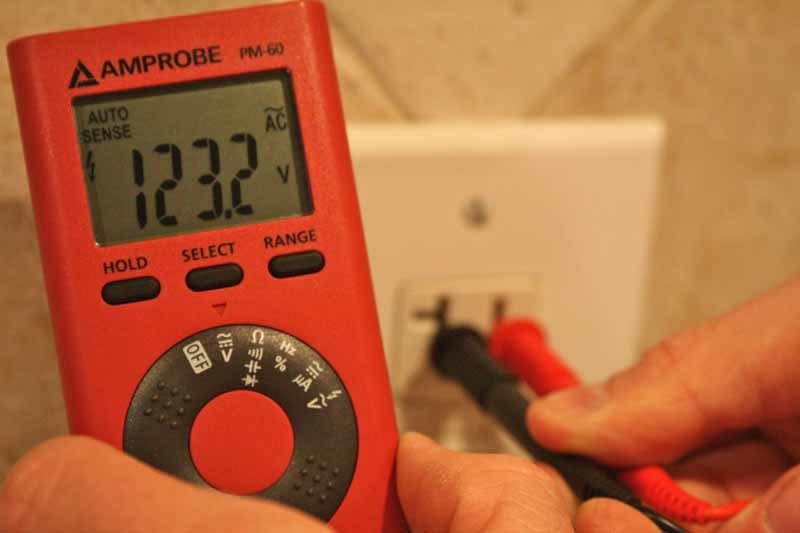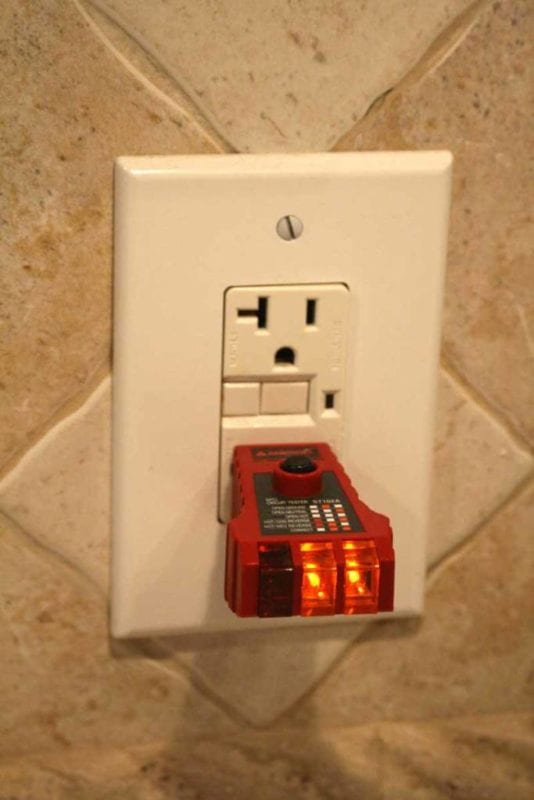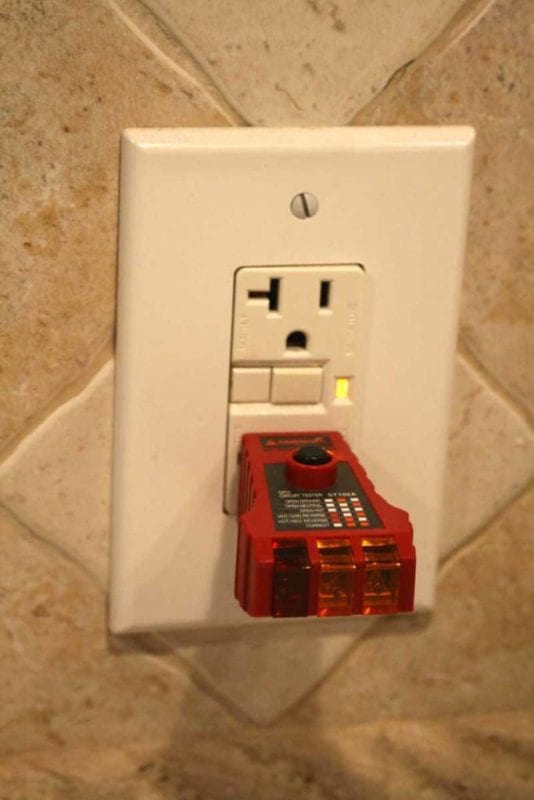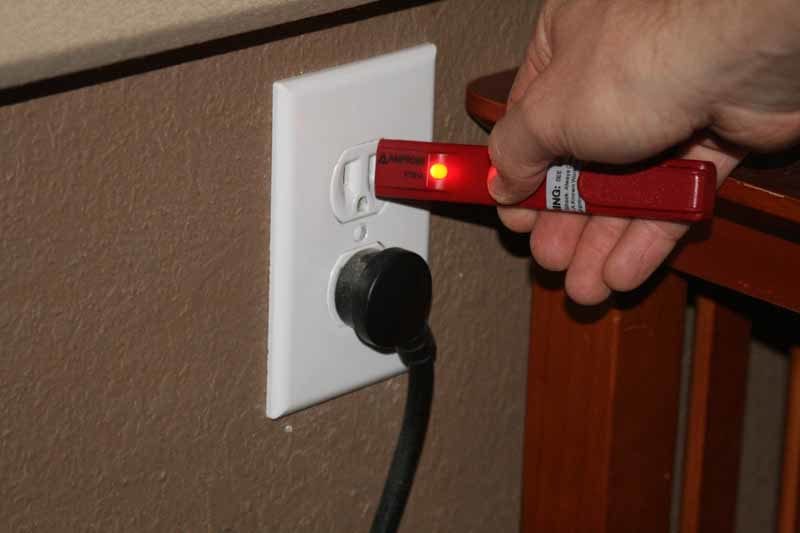Some people have extensive electrical test and measurement devices on-hand, ready to go at a moment’s notice. But there is the homeowner who doesn’t need all that much – and why spend more than you have to to get a basic kit that can handle light-duty testing for live power and ensuring that the outlet you added is working correctly. Need to check the voltage on a circuit or even a 9V battery? Perhaps a less-robust set of tools is all you really need. For this very reason, and for this very consumer, Amprobe has released the Amprobe PK-100R Electrical Test Kit at Lowe’s. It’s a compact kit that will, let’s face it, do 90% of the tasks you’re likely to take on as a homeowner.
We tested the Amprobe PK-100R with the intent to see if it would indeed function well for the non-professional home user. Our results were mixed, no doubt biased by the higher-end products we’re used to using on a regular basis. But, hey, Amprobe makes those too, so users and consumers should always have a resource for higher quality test & measurement solutions. This kit, in particular, is designed for those looking to do simple voltage, current, resistance and continuity checks – and all without breaking the bank or having to pull out overly complex or oversized tools.
Amprobe PK-100R Electrical Test Kit Features
The best way to cover the tools (there are three of them) in this review is to go through the4m one at a time – so that’s what we did. At the end we summarized our findings. Without further ado…
PM-60 Compact Digital Multimeter
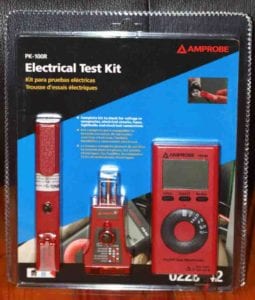
The Amprobe PK-100R Electrical Test Kit is the most visible tool in the kit and may be the primary reason for the purchase – unless you’re looking to immediately test some GFCI outlets or reach for the non-contact voltage detector. In any case, the PM-60 looks like a thinner version of the original iPod, with a monochrome LCD screen and a black rotating wheel that switches between the various testing modes of the tool. The meter runs on two pen-style batteries and is rated to CAT II 600V and CAT III 300V, so you won’t be doing much work on truly high voltage applications or places where you’re likely to experience any level of arc blast.
The tool is incredibly easy to use, and the only thing that may be confusing is the presence of two Voltage modes on the wheel. The first is your standard Voltage mode where the tool automatically detects AC and DC voltage and sets the range accordingly. The other Voltage mode, located at the opposite end of the dial, is the Voltage Sensing mode, whereby the tool can use the red probe (alone) to determine the presence of voltage in a circuit. When it does, an audible alert sounds to let you know you’ve got a live line and the LCD display shows a progressive line of dots, like a bar graph.
It Gets Your Attention
Speaking of beep – it’s loud and consistent. Where it wasn’t consistent, was in the scenario where we could simply tap the back of the unit and get it to beep – the sensor was either too sensitive, or the physical construction on the device itself simply allowed for it to beep when it wasn’t actually detecting voltage. In real-world use, this was annoying, but not terribly impactful to our work, since the false beeps were more “chirps” than the longer, sustained emissions of an actual continuity of voltage detection report.
The test probes are permanently affixed to the digital multimeter, something that is not unexpected at this price, but we were surprised that there was no storage bag or probe storage for the PM-60. I could see this being something you simply wrap the probe wires around. Causing them to eventually wear down and break. Even with this fault, the entire DMM is easy to place in a pocket and take with you – it’s just tiny (about 4-3/8 x 2-1/8). It’s also less than a half-inch thick.
ST102A Polarity Cube
I wanted to mention that the Test Kit instructions were a tad difficult to decipher, despite the graphical imagery and line art, and they completely ignore the other two pieces in the kit: the VT201A non-contact voltage detector and ST102A Polarity Cube Circuit Tester. We can’t get too upset, however since the voltage detector is self-explanatory and the GFCI-checking circuit tester has a legend for the various light indicator combinations on its top face (in the form of an affixed sticker). When we used the Polarity Cube, we found it to be simple and efficient. Plug it in, and it gives you the results. It’s perfect for any 120V line and also allows you to test your GFCI circuits. Pressing the GFCI Circuit Tester button, the GFCI will (should) trip immediately. In our testing it did just that and, after testing several circuits, we moved on.
Amprobe PK-100R Electrical Test Kit: Normal Amprobe PK-100R Electrical Test Kit: Tripped
VT201A Non-Contact Voltage Tester
After removing the plastic battery protector, you can immediately use the VT201A Non-Contact Voltage Tester by pressing the black button on the face of the tool. It’s positioned where your thumb would naturally fall and the red LED blinks as the tool emits a short beep, letting you know the battery is working. Then, as you get the tip of the tool close to an active voltage source, the Tester’s red LED blinks rapidly and the tool emits a diminished rapid chirping in time with the flashing light.
It’s simple, effective, and we think everyone should have a tool like this. I can’t convey how helpful this would have been those times I went to connect or disconnect a switched ceiling fan, only to discover that the previous homeowner had run a live power line into the box “pre-switch”. Oh the joys of 110V coursing down your arm. With the VT201A Non Contact Voltage Detector, you won’t have this happen.
Conclusion
Everyone needs an electrical test it. It’s a great way to keep from electrocuting yourself and, even if you only perform small repair tasks in your home, it will save you endless worry and hassle. Professionals won’t want this kit because it’s not robust enough to do much in an AC panel box or heavier duty applications. It’s also simply not built very well for daily use. But for the homeowner, it may be something to consider if you’ve never taken the plunge into any sort of test equipment.
We think consumers will like the non-contact voltage detector especially, and those wiring up an outlet will appreciate Amprobe’s Polarity Cube circuit tester. In terms of performance, this isn’t a heavy-duty tool, so it garnered an average score, due mostly to the cheapness of the Digital Multimeter. In terms of Value, it did slightly better, offering a nice sampling of tools in a convenient package. For some, this kit will be perfect.


